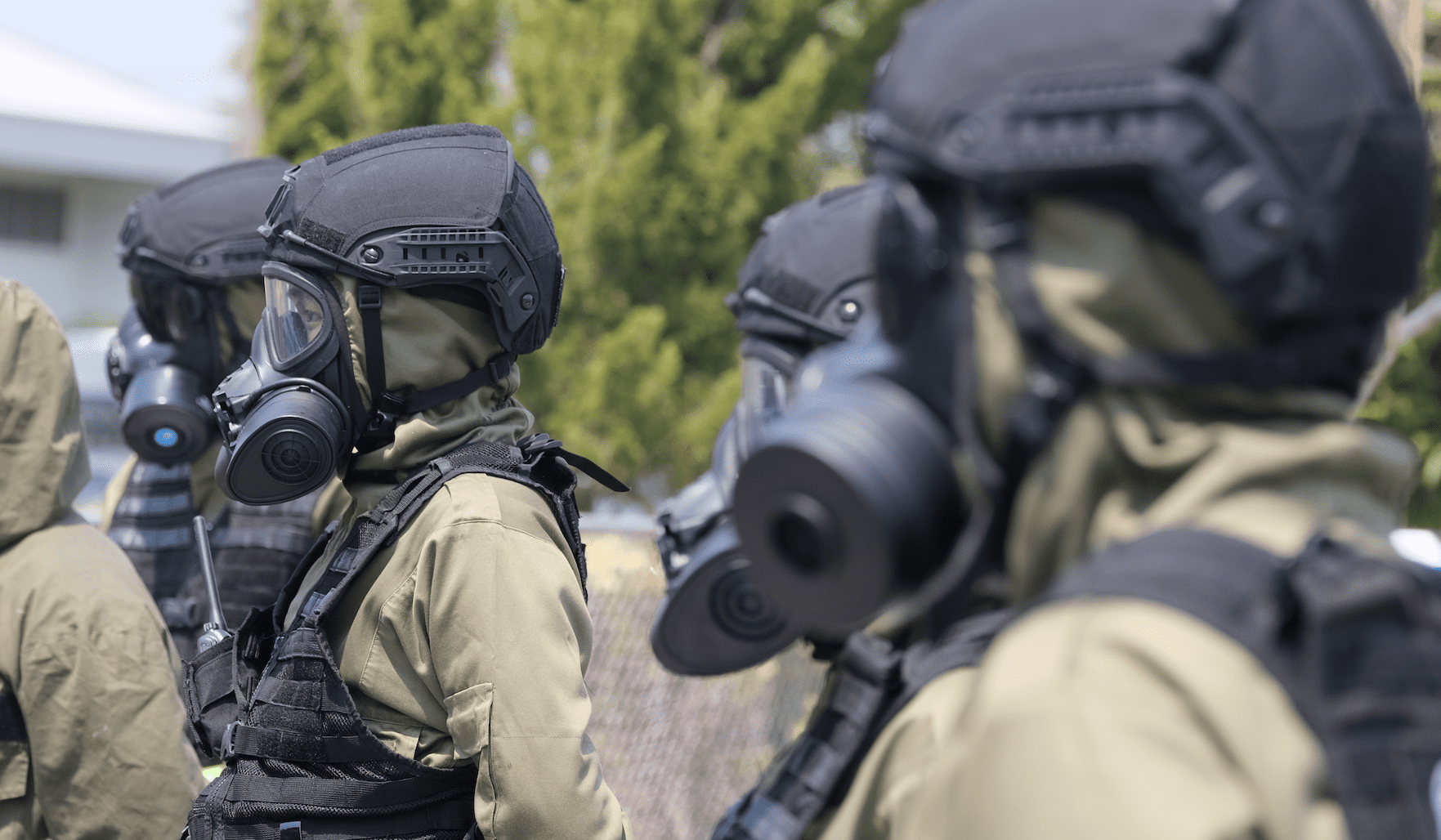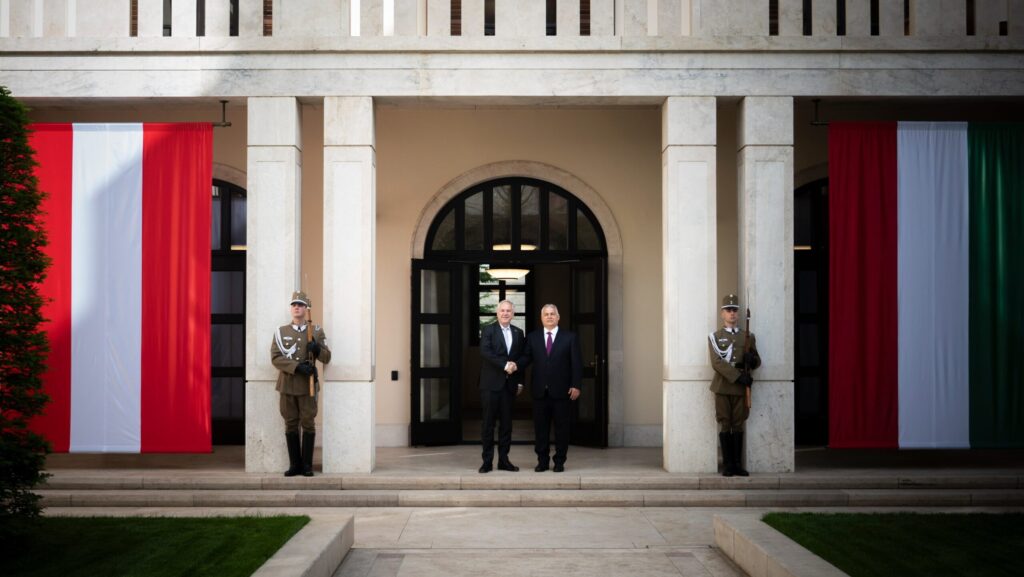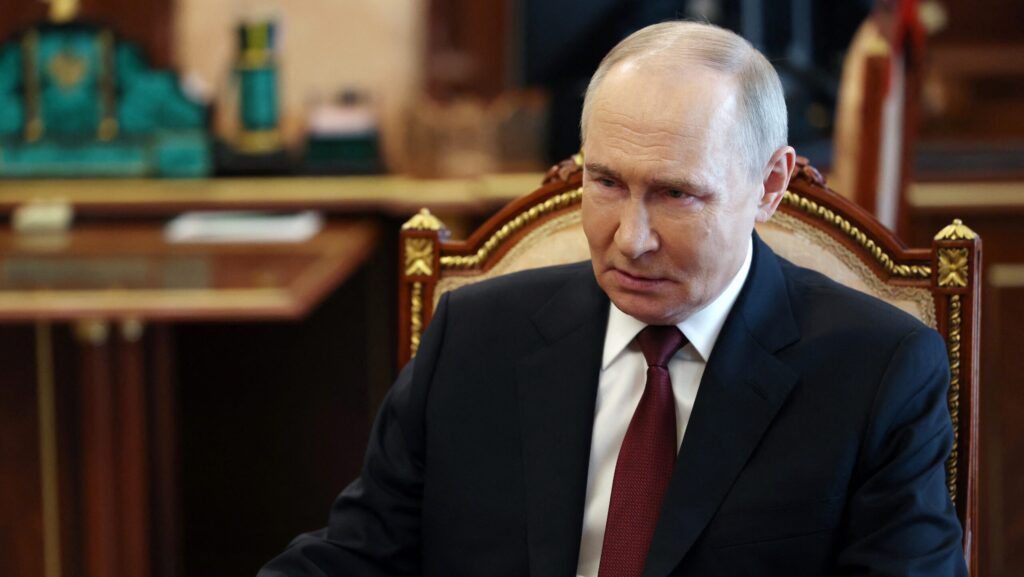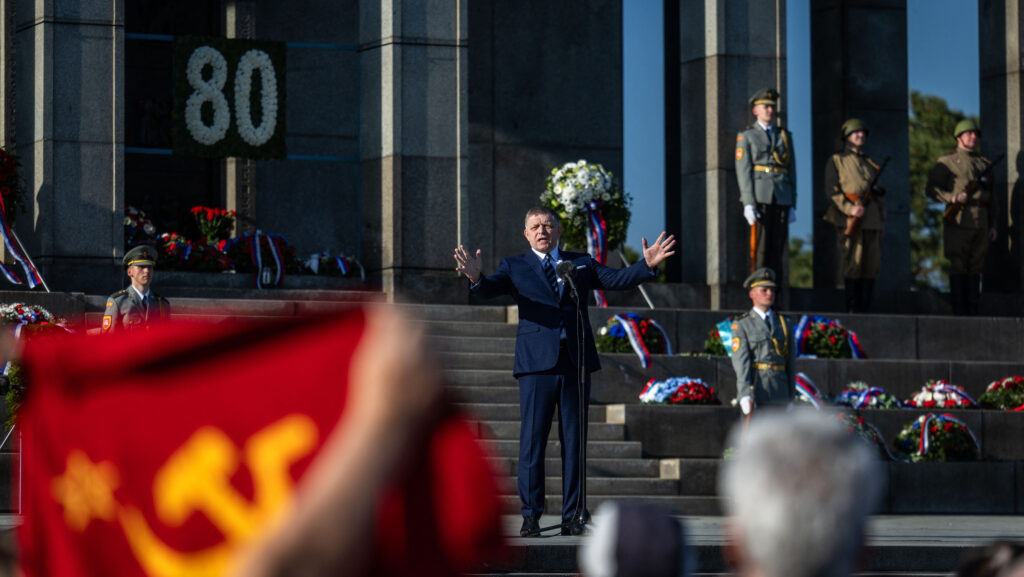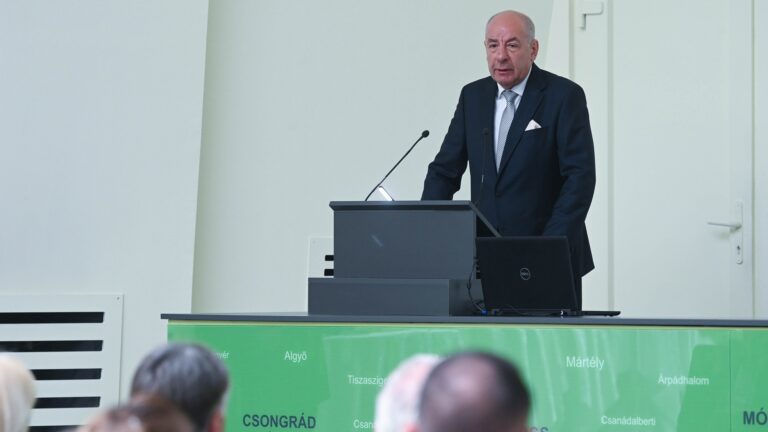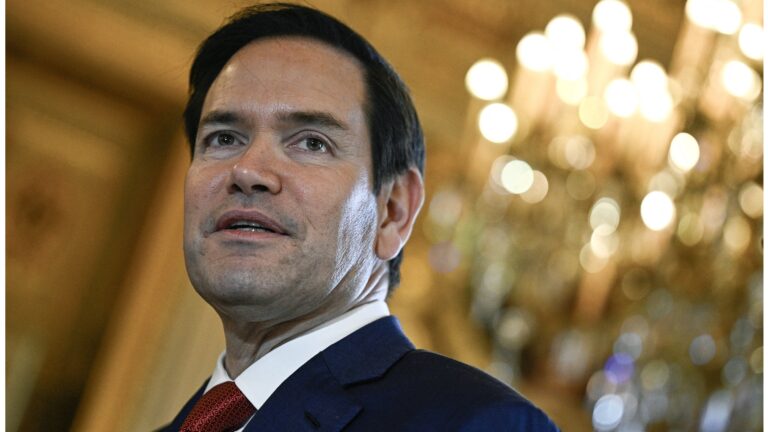‘In recent weeks, there have been at least five incidents of Russian missiles striking chemical plants and releasing hazardous materials’, says Hans Das, who emphasizes that that so-called CBRN threat in Ukraine has been particularly high since the start of the Russian offensive. According to the European Commission representative, the greatest CBRN risk now is posed by accidents at chemical plants. However, while the parties are making contradictory statements about a possible nuclear emergency, expert analyses suggest that the risks posed by nuclear weapons in the context of the Russian offensive should be taken seriously.
Since the beginning of the war, there has been an active debate about the risk of nuclear war in Europe. With the nuclear power plant in Chernobyl and another Ukrainian settlement (Zaporizhzhia) occupied by the Russian army, the nuclear threat has taken on an additional—perhaps more significant —aspect in recent months.
However, it is not only the nuclear threat that has been a cause for concern, but also the increase in so-called CBRN risks in general. CBRN is a short term meaning all ‘man-made’ chemical, biological, radiological and nuclear agents and devices that pose a threat.[1]
According to European Commission representatives, the CBRN threat has ‘increased significantly’ since the start of the war and the EU should help Ukraine to mitigate the risks, even at great cost.
Russia on Nuclear Weapons – Ambiguous
Representatives of the European Commission gave a presentation to a subcommittee of the European Parliament on the growing CBRN risks and the EU’s actions. Hans Das and Marc Fiedrich, representing the European Commission, spoke about the significant increase in the CBRN threat and the need for the European Union to respond to this.[2]
According to Hans Das, the main threat since February is the increased risk of nuclear and chemical-type accidents. First the Russian invasion of the Chernobyl and later the Zaporizhzhya nuclear power plant caused alarm, as the damage or explosion of a nuclear power plant can have negative consequences in other countries. The nuclear power plant in Zaporizhzhya has been under the control of the Russian state nuclear company Rosatom in recent weeks.
Hans Das stressed that ‘Russia has so far been ambiguous and vague on the issue of the use of nuclear weapons.’ According to Das, Russian Foreign Minister Sergei Lavrov had not ruled out the possibility of the Russian side using nuclear weapons at the beginning of the war as a result of the Russian-Ukrainian conflict. However, some recent statements now reflect the opposite.
The situation is even more ambiguous if we want to have a complete picture of the relationship between Russia and nuclear weapons.
In the first half of the 1950s, the Soviet army made rapid strategic developments in nuclear weapons, which caused fears among politicians in Western European countries
Stalin began to focus on the development of the atomic bomb in the years following the Second World War. In 1946, at a conference on military development, he declared that ‘the atomic bomb was the cheapest instrument of war.’[4] This statement was an inspiration for the development of the Red Army, which at the end of the Second World War still had an extremely archaic technical impression. The first test of the atomic bomb, the Pérvaya Mólniya (‘First Lightning’ or RDS-1) was in 1949. In the first half of the 1950s, the Soviet army made rapid strategic developments in nuclear weapons, which caused fears among politicians in Western European countries. Not insignificantly, at this time the European countries of NATO were encouraging the United States to install adequate infrastructure in Europe for its own nuclear missiles.
“The Shadow War” and the Nuclear Danger
‘Chemical weapons are essentially as old as machine guns in the army of Russia’, wrote Lev Aleksandrovich Fedorov.[3] The first signs of this were already present in the armies of the Tsars, but it was during the Soviet period that chemical weapons began to be developed in earnest. One of the first Soviet chemical weapons, for example, was sarin, a colourless liquid that could poison through the skin. As early as the 1930s, some Soviet scientists, such as A.N. Bakh believed that the future army would use chemical weapons and poisonous gases, rather than guns and bombs. After the break-up of the Soviet Union, Russia also had the problem of the enormous cost of safely storing and destroying chemical weapons.
After all, this situation set the stage for the serious nuclear tensions of the 1960s, and these tensions only began to de-escalate later in the 1970s. International law and the agreements of the nuclear superpowers played a key role in the de-escalation process. A total of 191 states have joined this treaty, including the five nuclear-weapon states. More states ratified the Treaty on the Non-Proliferation of Nuclear Weapons (NPT) than any other arms limitation and disarmament agreement.[5] This fact can illustrate well the historical importance of this convention. It was primarily thanks to these conventions that the two great powers, the United States and the Soviet Union, both reduced their nuclear missile numbers from the 1970s onwards. The most significant meeting between US and Soviet leaders took place in Reykjavik in 1986, but the important meeting between Ronald Reagan and Mikhail Gorbachev ended without a concrete nuclear agreement.
After the Cold War, the number of nuclear weapons fell by 60 per cent, but in recent decades many experts have pointed out that this does not automatically mean the end of nuclear weapons. Tensions and conflicts of interest between major powers with global influence, mutual fear, the lure of imperialism and the strongman image continue to be powerful constraints on peaceful international diplomacy. ‘Still, Russia and the European nuclear powers threaten to be the first to use nuclear weapons against each other. There is no reasonable connection between the political sphere and existing nuclear doctrines. Many elements of the nuclear postures have become anachronistic. In particular, extended deterrence in the form of forward basing of nuclear weapons and first-use doctrines are deemed increasingly dysfunctional both in Europe and in East Asia’, pointed out the Norwegian geopolitician Sverre Lodgaard a decade ago.[6] This topic is even more sensitive if we stress that the geopolitical tensions in the background have been particularly heightened in recent years. ‘The United States and Russia are fighting an undeclared virtual war’, wrote George S. Beebe in 2019. ‘It is not a hot war, as between Japan and the United States in World War II. And it is not a cold war, driven by two ideologically incompatible world powers, as between the United States and Soviet Union from the late 1940s through the 1980s. Rather, it is something in between, a shadow war, wherein the combatants attempt to achieve goals that, for much of human history, would have required the direct use of military force or other physical action, but today can be accomplished through less kinetic means. (…) Moreover, in contrast to the shared appreciation of risks and dangers that characterized the US-Soviet relationship after the Cuban missile crisis, neither side recognizes how easily this shadow war could spiral out of control’, explained Beebe.[7] In Beebe’s view, many circumstances (the media, statesmanship in foreign affairs, escalate-to-deescalate doctrines, the character of Putinism) are more unfavourable today for the management of a nuclear tension than during the Cold War.
Hypersonic Missiles vs Mutual Deterrence System
There have been many examples of ‘escalate-to-deescalate policy’ behaviour in recent years. Suffice it to recall that it was at the initiative of the Russian political leadership that Joe Biden and Vladimir Putin issued a joint statement in June 2021 on the unacceptability of the use of nuclear weapons.[8] Nevertheless, Vladimir Putin later made indirect references to the use of nuclear weapons at the start of the Russian invasion in February 2022.
The two researchers’ results showed that nuclear powers had a stronger tendency to take greater risks in conflicts than in disputes between non-nuclear states
In recent decades, many researchers have addressed the risks of nuclear weapons. Abramo F.K. Organski and Jacek Kugler concluded in their studies that nuclear weapons can deter war between nuclear states, but not confrontations at lower levels of conflict. The two researchers’ results showed that nuclear powers had a stronger tendency to take greater risks in conflicts than in disputes between non-nuclear states. This finding is now clearly echoed in the case of Russia’s belligerent aggression against Ukraine. (Richard Betts also found that US military behaviour became more strongly risk-maximising-coercive once the US had nuclear weapons.) [9]
The real risks, however, are more long-term: Russia’s nuclear policy was rather conservative after the Cold War until 2010, but this has changed in recent years. Some experts believe that Vladimir Putin sees hypersonic missiles as a counter to the US defence system.[10] A significant number of fast-flying offensive weapons would strain the defenders’ launch detection, tracking and response capabilities. The result could be that states would put more of their retaliatory forces on high alert, even in peacetime. This would obviously seriously undermine the system of mutual deterrence and the chances of peace in the future.
Another challenge for the United States is the concern about Russia’s political future. Vladimir Putin is in favour of a strong centralization of Russian political power, but the break-up of Russia into smaller states could also lead to the destabilization of the entire Central Eurasian subcontinent. The consequence could be a loss of control and control over nuclear weapons, which could also have serious implications for international politics.[11]
The Biggest CBRN Risk: Chemical Plant Accidents
The European Commission representatives stressed, however, that the CBRN threat in Ukraine is far from being limited to nuclear risks. Rather, the greatest threat is posed by possible accidents at the various chemical plants due to the war. According to Hans Das, a particular danger is that most chemical plants and factories are located in the parts of Ukraine closer to the war, such as the southern and south-eastern parts of the country. According to Das, there have been at least five occasions in recent weeks when a missile or projectile has released dangerous chemical substances.
Marc Fiedrich said that Russia has not been able to provide any substantial evidence to support the claim that research laboratories in Ukraine are involved in the development of biological and chemical weapons. This claim has been refuted by various UN bodies. The European Commission’s position is that Ukraine has complied with international conventions in this area. Fiedrich also pointed out that the Science and Technology Centre (STCU) has been operating in Ukraine for some thirty years, with the aim of ensuring that scientists and engineers do not use their tools and substances for military purposes. According to a statement issued by the STCU, its research has been exclusively for peaceful purposes, has been under constant scrutiny and has been verified by numerous scientific organizations against Russian claims.[12]
Ukraine has requested European Union support under various international conventions, such as Article 10 of the Chemical Weapons Convention (CWC)[13] , for example, for the supply of protective suits and reconnaissance equipment. However, the European Union has thoroughly exceeded this on the basis of its own support systems, although the likelihood of chemical weapons being used is disputed. Some analysis suggests that, unlike in Syria in 2017, a Russian chemical attack in Ukraine is unlikely. However, some military experts argue that NATO and Western countries should be prepared and that they should respond with an “appropriate response” in the event of a Russian chemical attack.[14] But the reality is that, even in 2017, the US response to the atrocities in Syria has been relatively muted. The use of chemical weapons in the Ukraine-Russia war would create an even more serious situation, forcing NATO to intervene directly against the Russian military.[15]
[1] Dominique Loye and Robin Coupland, ‘Who will assist the victims of use of nuclear, radiological, biological or chemical weapons – and how?’, International Review of the Red Cross, 89/866 (June 2007), 329, https://corteidh.or.cr/tablas/a21906.pdf, accessed 18 May 2022.
[2] European Parliament Multimedia Centre, ‘Subcommittee on Security and Defence – CBRN threats’(10 May 2022) https://multimedia.europarl.europa.eu/en/webstreaming/sede-committee-meeting_20220510-0900-COMMITTEE-SEDE, accessed 1 June 2022.
[3] Lev Aleksandrovich Fedorov, ‘Chemical Weapons in Russia: History, Ecology, Politics’ (27 July 1994), https://nuke.fas.org/guide/russia/cbw/jptac008_l94001.htm, accessed 1 June 2022.
[4] Steven J. Zaloga, The Kremlin’s Nuclear Word (Smithsonian Books, 2002).
[5] Sverre Lodgaard, Nuclear Disarmament and Non-proliferation (London: Routledge, 2010), 49.
[6] Lodgaard, 221.
[7] George S. Beebe, The Russia Trap. How Our Shadow War with Russia Could Spiral into Nuclear Catasrophe (New York: Thomas Dunne Books, 2019), 20.
[8] ‘Biden and Puting agree: “Nuclear war cannot be won and must never be fought”’ (16 June 2021), https://www.dw.com/en/biden-and-putin-agree-nuclear-war-cannot-be-won-and-must-never-be-fought/a-57921072, accessed 19 May 2022.
[9] Daniel S. Geller, ‘Nuclear Weapons, Deterrence, and Crisis Escalation’, The Journal of Conflict Resolution, 2/34 (8 June 1990).
[10] Yulia Latynina, ‘Putin’s Fancy Weapons? Everything Old is New Again’, The New York Times (30 July 2019), https://www.nytimes.com/2019/07/30/opinion/putins-fancy-weapons-everything-old-is-new-again.html, accessed 20 May 2022.
[11] Stephen J. Cimbala, The United States, Russia and Nuclear Peace (Cham: Palgrave, 2020), 139.
[12] Science and Technology Center in Ukraine: ‘Regarding Russia’s Disinformation Against the STCU’, http://www.stcu.int/documents/stcu_inf/STCU_Russian_Disinformation_Fact_Sheet.pdf, accessed 18 May 2022
[13] International Committee of the Red Cross: Treaties, States Parties and Commentaries – Assistance and Protection against Chemical Weapons – Article X, https://ihl-databases.icrc.org/applic/ihl/ihl.nsf/Article.xsp?action=openDocument&documentId=755AF3CADD47B239C12563EE004BD2DE, accessed 18 May 2022.
[14] Dan Sabbagh, ‘Could Russia use chemical weapons in Ukraine and how would west respond?’, The Guardian (26 March 2022), https://www.theguardian.com/world/2022/mar/26/could-russia-use-chemical-weapons-in-ukraine-and-how-would-west-respond, accessed 18 May 2022.
[15] Hanna Notte, ‘Why deterring Russian use of chemical weapons is a challenge’, The Washington Post (18 April 2022), https://www.washingtonpost.com/outlook/2022/04/18/chemical-weapons-deterrence-russia-ukraine/accessed 20 May 2022.

